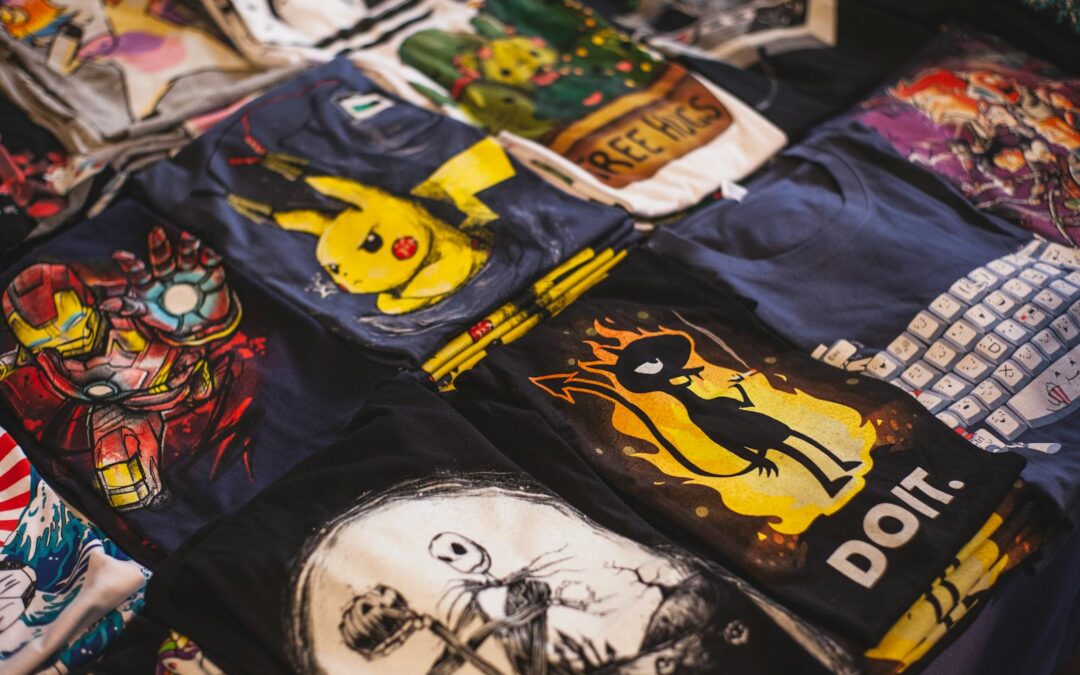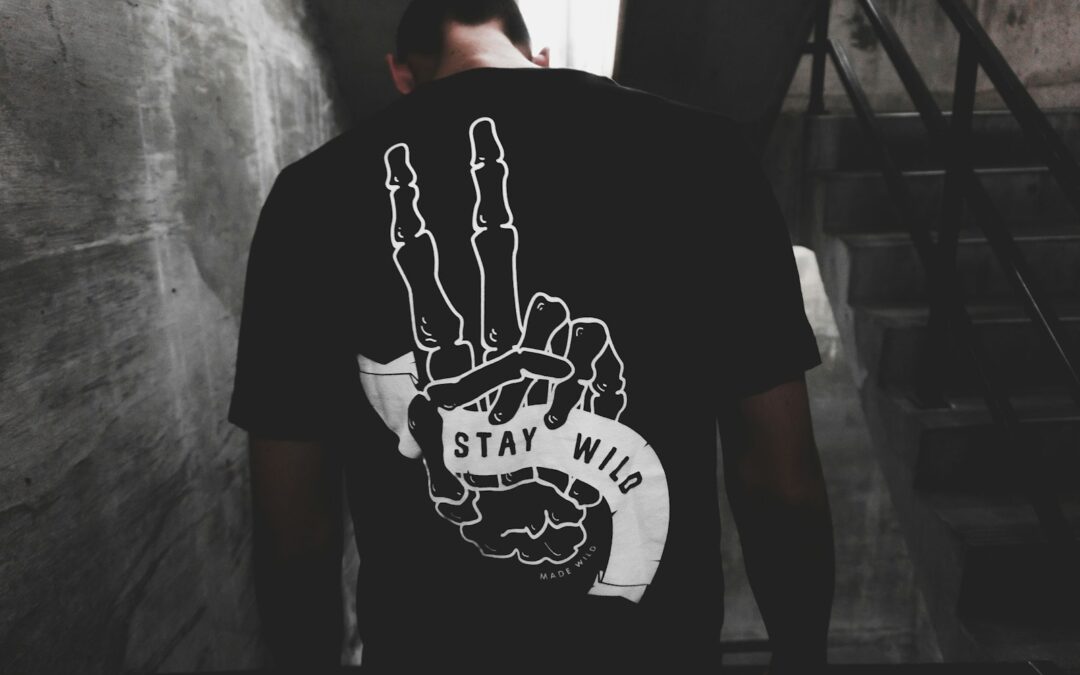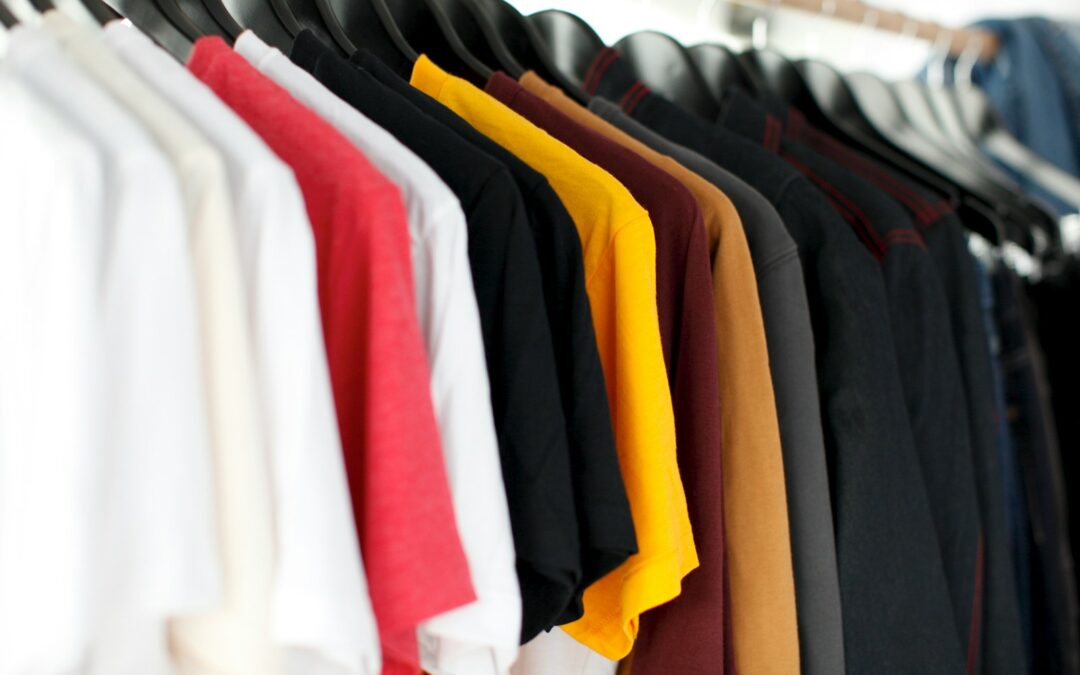In the world of print transfer methods, custom sublimation transfers and Direct to Film (DTF) transfers have emerged as popular choices for small business owners looking to diversify their product offerings. Both methods offer unique advantages and serve different needs, but how do they really compare side by side? In this blog, we will unravel the intricacies of both, helping you make an informed decision for your business. Whether you’re new to the game or a seasoned pro seeking to refine your techniques, understanding these methods is crucial in today’s fast-paced market.
Ready to Press | Sublimation Transfers and DTF Transfers
Print transfer methods like sublimation and DTF are vital for small businesses that want to offer customized products. They form the backbone of many retail and online shops, providing diverse and vibrant options for consumers. Custom sublimation transfers are known for their quick turnaround time of 1-3 business days, emphasizing prompt service. Sublimation transfers are a well-known technique, often associated with it’s vibrant colors and durability. Meanwhile, the newer DTF transfers are making waves with their flexibility and simplicity. Understanding these can set your business apart in a competitive landscape.

Understanding Sublimation Transfers
Sublimation printing involves a unique process where heat and pressure transform solid dye into gas without passing through a liquid phase. This gas then permeates polyester-coated surfaces, embedding the design directly into the material. Sublimation printing involves producing mirrored images on specially coated transfer paper, which facilitates the transfer of detailed and vibrant images onto polyester substrates. It’s a fascinating science that results in vibrant, long-lasting prints. The process requires materials like polyester garments or special coated surfaces to work effectively. The higher the polyester content, the better the results, ensuring that the transferred image is sharp and colorful.
Application instructions for sublimation transfers are straightforward but require precision. Setting the right temperature, pressure, and time is crucial to avoid faded or uneven prints. Factors such as the type of heat press used and the specific garment or material also play significant roles in determining the quality of the final product. With sublimation, consistency and precision are key.
What Can You Put Sublimation Transfers On?
Sublimation transfers are incredibly versatile, allowing for a wide range of products to be customized. Lower polyester content in garments can result in a more vintage look for the final image. Here are some popular surfaces you can use for sublimation:
-
Polyester Apparel: T-shirts, hoodies, and sports jerseys made from polyester or polyester-blend fabrics benefit greatly from sublimation, resulting in bold and vibrant designs.
-
Mugs and Drinkware: Specially coated ceramic mugs can be transformed with unique designs that last through dishwasher cycles for durable personalization.
-
Phone Cases: Sublimation allows for the creation of custom, detailed graphics on phone cases, ensuring your smartphone stands out.
-
Fabric Accessories: Items such as tote bags, pillow covers, and cushion cases made from polyester blends are perfect for detailed and colorful sublimation prints.
-
Home Décor: Sublimation can be applied to polyester-based home décor products such as wall art panels, flags, and tapestries, adding a personal flair to living spaces.
-
Mouse Pads and Coasters: These items are often made from polyester or have a polyester coating, making them ideal candidates for vibrant sublimation prints.
-
Photo Panels: Glossy photo panels designed for sublimation offer a stunning way to display photographs with exceptional clarity and color depth.
Choosing the right substrate is crucial in achieving the desired aesthetic and durability in your sublimation products, expanding your offerings in any retail or online shop efficiently.

Diving into DTF Transfers
DTF transfers stand out with their ability to print on a broader range of fabrics, including cotton and blends. Unlike sublimation, DTF doesn’t rely on the fabric’s composition as much, allowing for greater versatility. The technology behind DTF involves printing designs onto a special film using CMYK+W inks, which are then transferred to the fabric using heat and pressure. The inclusion of white ink creates a vibrant base, especially on dark fabrics, which enhances the design’s visibility and richness.
The advantages of DTF transfers are numerous. They are more versatile in terms of fabric compatibility, offering superior vibrancy and opacity, particularly on dark garments. However, limitations do exist, such as the potential need for additional equipment and expertise to manage the ink and film properties effectively. Despite these, DTF continues to grow in popularity for its adaptability and ease of use.
What Can You Put DTF Transfers On?
DTF transfers offer remarkable flexibility when it comes to the types of materials they can be used on. Here are some popular surfaces suitable for DTF transfers:
-
Cotton Fabric: Unlike sublimation, DTF works exceptionally well on cotton fabrics, making it perfect for customizing cotton t-shirts, sweatshirts, and hats.
-
Polyester and Blends: Although sublimation is favored for polyester, DTF transfers still produce excellent results on polyester and poly-cotton blends, providing vivid designs.
-
Canvas Bags and Totes: The versatility of DTF allows for artistic designs on canvas, offering durable and attractive customized bags and totes.
-
Denim Jackets and Jeans: DTF transfers can be applied to denim, delivering distinctive customization options that stand out.
-
Leather Products: Customize leather goods such as wallets, belts, and jackets with DTF transfers for a unique look.
-
Sportswear and Jerseys: Enhance team uniforms and individual sportswear with vibrant prints that remain durable through constant use and washing.
-
Home Textiles: Items like cushion covers and tablecloths can be adorned with detailed DTF designs, adding a personal touch to home decor.
Choosing the appropriate materials for DTF transfers ensures high-quality results and expands your product range, offering customers personalized options across various fabric types.

Quality and Application Comparison
When comparing sublimation and DTF transfers, print quality is a critical factor. Sublimation transfer is known for its unmatched color vibrancy and durability on polyester surfaces, but DTF shines with its ability to deliver vibrant, opaque prints on almost any material. The use of white ink in DTF transfers provides a solid base layer, making designs pop even on dark backgrounds.
Ease of use is another consideration. Sublimation requires precise conditions and is best suited for specific materials, whereas DTF offers broader applicability with less stringent requirements. This flexibility makes DTF a more accessible option for small businesses without high-end equipment. In terms of longevity, both methods offer excellent wash resistance when applied correctly, ensuring that prints remain vibrant and intact over time.
Cost and Time Considerations
Cost is always a significant factor for small businesses. Sublimation generally requires more investment in specialized materials and equipment, particularly for large-scale operations. On the other hand, DTF transfers can be more cost-effective for smaller batches, as they don’t require specialized coated paper or polyester fabrics, which reduces material costs significantly.
Time efficiency is another area where DTF transfers excel. The process of preparing and applying DTF transfers is typically quicker, allowing for faster turnaround times on orders. This speed can be a decisive factor for businesses with tight deadlines or those looking to scale up operations without compromising on quality.
Use Cases and Business Models
Both sublimation and DTF transfers have unique applications in the business world. Sublimation is ideal for producing high-quality prints on polyester garments, mugs, and other coated items, making it perfect for businesses focused on premium products. Its vibrant colors and durability are unmatched, providing a superior product for customers who appreciate quality.
DTF transfers, with their broader material compatibility, offer greater flexibility for businesses wanting to diversify their offerings. Whether it’s cotton shirts, bags, or home decor items, DTF enables a wide range of applications. This versatility supports various business models, from small-scale producers to large enterprises looking to expand their product lines.

Introduction to Limitless Transfers
Limitless Transfers stands out as a leader in the DTF printing market, offering high-quality DTF transfers that you can peel hot, with no setup fees and fast turnaround times. Set a time, set pressure, and your DTF transfers are printed right on the shirt. Their services cater to small businesses, providing easy-to-apply transfers that work on any fabric or garment. With free shipping on orders over $50 and award-winning quality, Limitless Transfers is a top choice for small businesses seeking reliable, cost-effective printing solutions.
Whether you’re just starting or looking to enhance your existing offerings, Limitless Transfers provides the tools and support needed to succeed in the competitive printing industry. Their commitment to quality and customer satisfaction is evident in their wide range of services and the positive reviews from satisfied clients.

Conclusion and Next Steps
In the debate between sublimation and DTF transfers, each method has its strengths and ideal applications. Sublimation excels in color vibrancy and durability on polyester surfaces, while DTF offers unparalleled versatility across different fabrics and materials. For small business owners, understanding these differences is crucial in making informed decisions that align with their needs and goals.
If you’re ready to explore the benefits of DTF transfers further, consider partnering with Limitless Transfers. Their expertise and high-quality products can help elevate your business to the next level. Share your experiences with transfer methods and discover more about what Limitless Transfers has to offer, ensuring you stay ahead in the dynamic world of custom printing.
Resources
To help you make informed decisions about sublimation and DTF transfers, we’ve compiled a list of resources that provide valuable insights, tutorials, and product information:
-
Printwear Magazine – Offers articles and guides on the latest trends in the custom printing industry.
-
T-shirt Forums – A community of print enthusiasts discussing techniques and troubleshooting tips for both sublimation and DTF transfers.
-
Limitless Transfers Blog – Features updates, tips, and case studies related to DTF printing and applications.
-
Transfer Express – Offers a comprehensive education center with webinars, videos, and articles on various transfer printing techniques and business growth strategies.
-
Grafix Plastics – Provides information and materials for DTF and sublimation printing, including technical support and advice on project execution.
-
Impressions Magazine – An industry staple offering news, tips, and insight into the latest equipment and best practices in the custom decorating and printing market.
-
YouTube – DTF Printing Hacks – A collection of video tutorials and DIY hacks specifically for improving DTF printing results and techniques.
These additional resources provide further depth and learning opportunities for those interested in mastering sublimation and DTF transfer techniques, ensuring businesses can access the latest knowledge and advancements in the printing industry.




